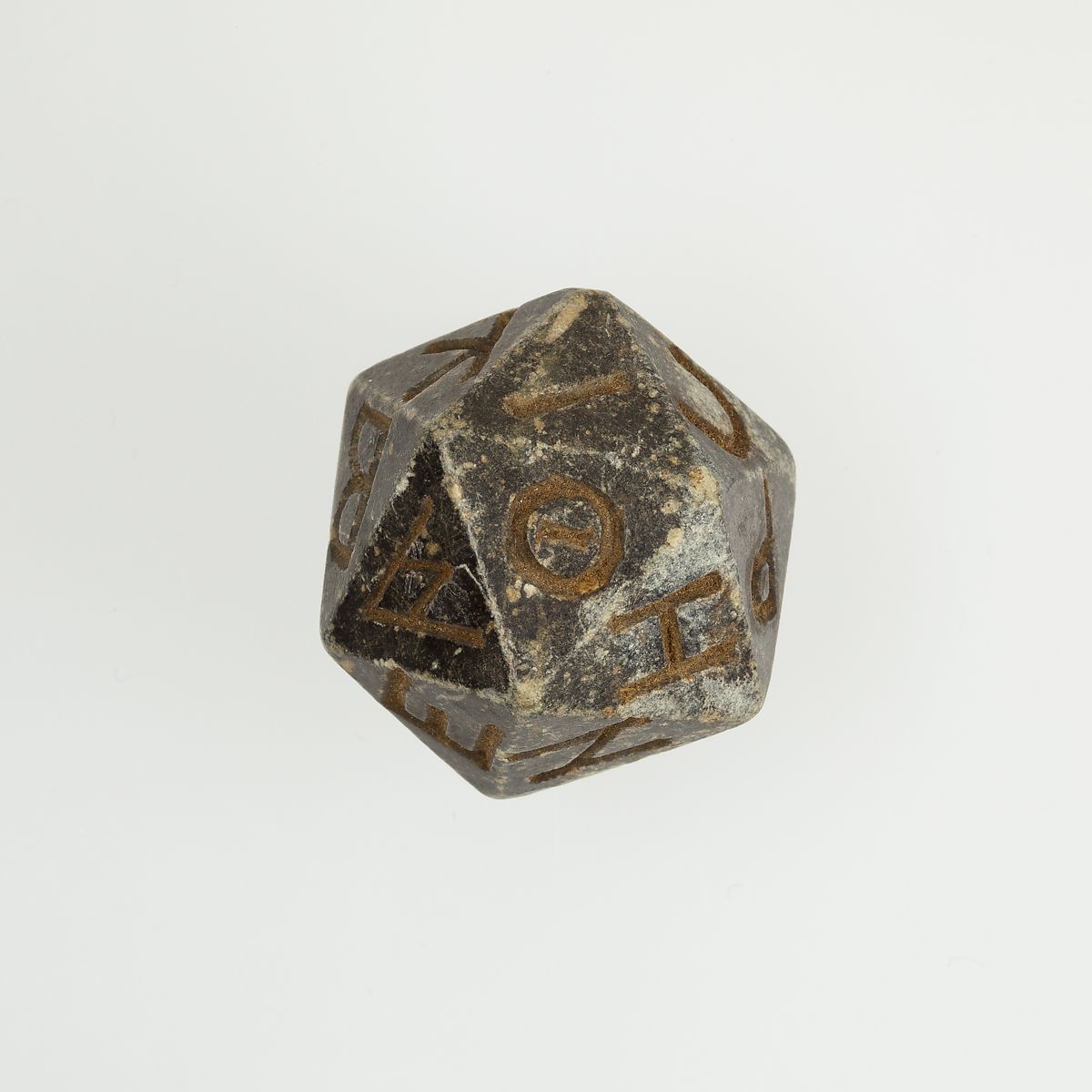
Greek icosahedron (D20) from around 300 BCE. No data on whether it's balanced. Source: MOMA, link below.
Recently I was shocked to see a similar image to the one above cross my social media feed. It had some headline about Greeks playing Dungeons & Dragons, which is just ridiculous because the ancient Greeks were diehard Labrynths & Minotaurs fans. I mean, they’d never even heard of TSR or Gary Gygax.
Not to admit my own ignorance here, or maybe to do exactly that, but up until I saw that post I thought that the D20 had probably been invented by Gygax and company at TSR. I mean maybe it had been around before then and used by the wargamer community, but it was definitely an invention of the mid-20th century, right?
Oh, how wrong I was.
While it is true that the oldest plastic D20 was created in 1950, the history of polyhedral dice goes back way earlier than that.
Ancient Math Rocks
Humans have been using dice at least as far back as 3000 BCE. Some sources online will talk about dice found from around 5000 BCE, but these older findings are up for debate.
Surprisingly, given that this was the end of the stone age, ancient math rocks weren’t usually made out of, well, rocks. The earliest dice were mostly made of bone.
Sheep talus or knucklebones were commonly used. These irregular shaped, roughly cubical, bones have four flat sides and two rounded ones. They might have numbers or symbols carved on each face. Often, they were used for divination purposes or in seeking the “will of the gods.” This practice is known as astragalomancy.
As you can imagine, these dice weren’t exactly balanced, and rolls weren’t nearly as random as modern dice. But in divination, you can always just trust the gods to guide the roll in the proper way. That critical miss was probably the gods’ will.
It’s from around 3000 BCE that we find what we would think of as “true” dice. Someone thought to cut off the roundy bits of the knucklebone to make a “cubical” D6. Archaeologists have found these in ancient sites along with gaming boards and other accoutrements. They’ve also found pyramidal D4’s from at least 2600 BCE, although there is some argument over whether these were actual dice (meaning meant to be rolled for randomization) or whether they served some other function. By at least 2000 BCE we find D6 along with gaming sets buried in Egyptian tombs.
Sophocles claimed that dice were invented during the siege of Troy which seems easily disprovable. In the last millennium of BCE dice were popping up everywhere—Rome, India, China. There was some cross-pollination in the ancient world to explain some of this. But it’s likely dice were invented at multiple places in multiple times throughout history and prehistory.
First Critical Hit
The oldest known D20 (pictured above) dates to 300 BCE from Egypt. It can be seen at the Metropolitan Museum of Art. The thing is gorgeous. I for one would love to see how it rolls if I could do so without damaging it or getting arrested.
The second oldest D20 dates to around 100 AD. By this point in history, we’d long since moved beyond just bones. Stone, wood, and ivory were all common materials. This one was made of glass, and it is also gorgeous. You actually could have bought this one at auction back in 2003 if you had a spare $18k laying around.

Roman glass icosahedron (D20) sold at auction for nearly $18000. Source: Christie's.
But Are They Balanced?
Most of these ancient dice were far from random. From knucklebones to carved sticks, those ancient gamers started with natural objects and made do. Even when they were carved and shaped into more regular, recognizable dice, the dice had obvious variations in shape and weight. Like a lot of modern dice sets though, they were good enough. (If you want to learn the best way to tell if your dice are balanced, read our blog post here.)
And then there were the cheaters. One of my favorite catchphrases is “people are people, everywhere.” Apparently people are people, everywhen too, because there have always been cheaters.
Shaving a die or shaping it to favor a particular roll wouldn’t have been that difficult. But some ancient folk apparently went to even greater lengths. A set of dice were found at Pompeii that were loaded with lead weights! Not to speak ill of the long dead, but if anyone deserved to get fried in a volcanic eruption…
Modern Times
As with all technology, dice have continued to develop and refine over time. In 1910 a patent was issued for a D10. As stated above the first plastic D20 was patented in 1950. These were numbered 0-9 twice and used to generate a random number between 1 and 100. They were eventually adopted in a limited fashion by the wargaming community. And it was in those circles that Gary Gygax and Dave Arneson cut their teeth and first seized upon the idea of a fantasy RPG system that we all know and (mostly) love today.
The first known D20 that was numbered 1 through 20 was in a game called Zazz Polyspheres. This was a dice game invented by one Fredda Sieve, a well-to-do widow and entrepreneur. The game also included a D12, D8, D6, and D4. The set would be instantly recognizable and usable on a modern RPG table, although the numbering on the D4 is a little wonky. You can read more about Sieve and Zazz Polyspheres on Jon Peterson’s blog. (Also if you haven’t read his book Game Wizards, about the rise and fall of Gary Gygax and TSR, you should.)
Today the vast majority of dice are made of plastic, either acrylic or resin. If you’re interested in the difference between the two, you can read more here. But in my clearly biased opinion, resin is just better!
But since what was old always becomes new again, you can also get modern polyhedral dice from a variety of materials—wood, metal, stone, glass, even bone!
Bonus: But why pips?
As tabletop RPG players we’re used to our dice having numbers on their faces, along with the occasional cool logo to denote a critical hit on the D20. But traditionally, dice have pips, dots giving a count of each face’s value. How come?
Well, this tradition is mostly a consequence of the vast amounts of time that humans have been using dice. Dice are so old that they were often invented & in use before writing! There weren’t specific symbols to denote numbers, so dots or scratches were used to give a count. As society developed, the pips just stuck!
Conclusion
As I said, this was a brief history, so there’s a lot I left out. And probably still more I got wrong. What do you think? Any interesting dice trivia we didn’t mention? Tell us in the comments!


0 comments